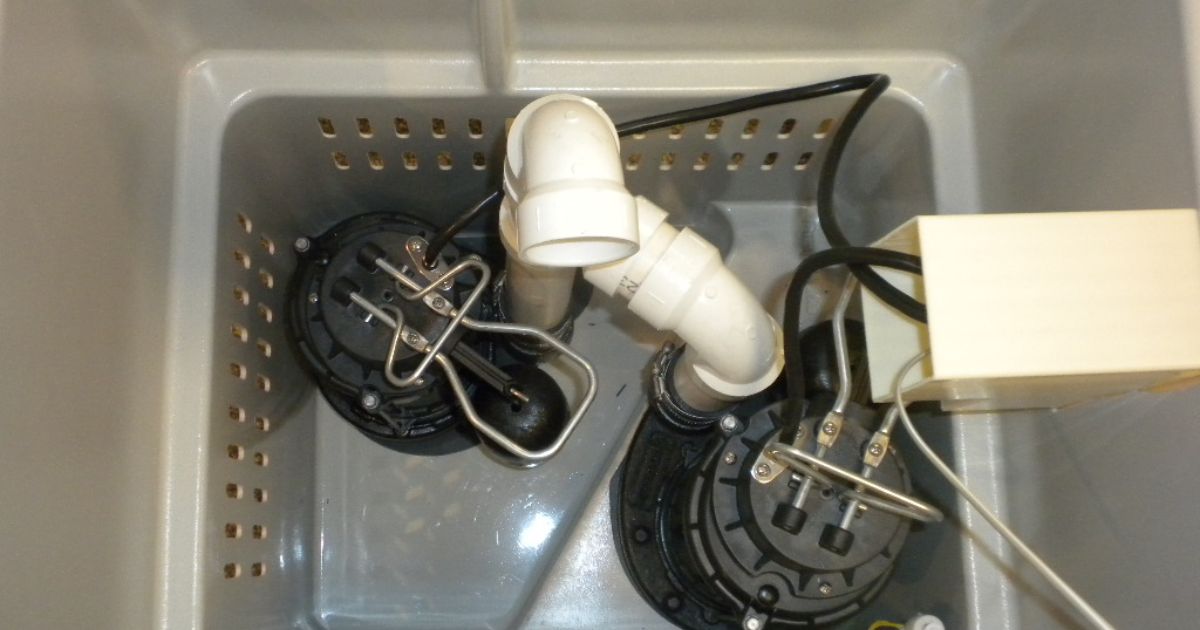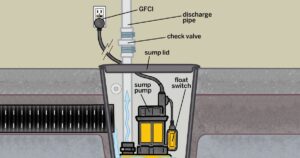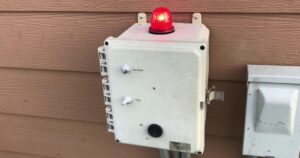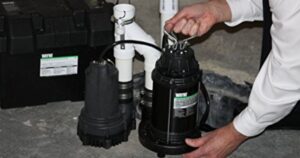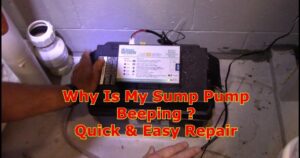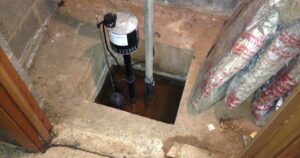In the depths of a storm, when the rain pours relentlessly and the ground becomes saturated, a sump pump stands as a guardian, protecting our homes from the threat of flooding. But have you ever wondered how much power this diligent defender draws? In this article, we will delve into the technicalities of a sump pump’s electrical consumption, exploring the motor startup current, full load current, and the intricacies of battery selection. Join us as we uncover the secrets behind the amperage of a sump pump.
Key Takeaways
- Sump pumps draw varying amounts of current, ranging from 3-5 amps for smaller pumps to 10 amps or more for larger pumps with higher horsepower.
- The power consumption of a sump pump is measured in watts, with average consumption ranging from 300 to 1,500 watts.
- Compliance with the National Electric Code (NEC) guidelines ensures safe electrical wiring and circuitry for sump pump installations.
- The battery capacity and recharge time are crucial factors in selecting a reliable sump pump system for emergencies. Higher battery capacity ensures longer backup runtime, while shorter recharge time allows for faster readiness for the next power outage.
Motor Startup Current
The motor startup current of a sump pump is an essential factor to consider when determining its electrical requirements. When a sump pump is turned on, its motor requires a surge of current to overcome the initial inertia and start operating.
This startup current is typically higher than the full load current, which is the amount of current drawn by the motor during normal operation. The startup current can vary depending on the size and type of sump pump, but it is generally higher for larger pumps or those with more powerful motors.
It is important to account for the motor startup current when sizing the electrical circuit and selecting a suitable circuit breaker or fuse. In the next section, we will discuss the full load current of a sump pump.
Full Load Current
The full load current of a sump pump can be determined by measuring the amount of current drawn by the motor during normal operation. This current represents the maximum amount of electrical power that the motor requires to function at its rated capacity. Understanding the full load current of a sump pump is crucial for selecting the appropriate circuit breaker and wire size to ensure safety and prevent electrical overload. Here are two important factors to consider when it comes to the full load current of a sump pump:
- Motor Efficiency: The efficiency of the motor affects the amount of current it draws during operation. Higher efficiency motors tend to draw less current, resulting in lower energy consumption and cost savings.
- Pump Size: The size of the pump can also impact the full load current. Larger pumps generally require more power and draw higher currents compared to smaller ones.
National Electric Code
To comply with regulations and ensure safe electrical installation, the National Electric Code (NEC) provides guidelines for the proper wiring and circuitry required for sump pump systems. The NEC sets forth standards that must be followed to prevent electrical hazards and ensure the reliable operation of sump pumps.
These guidelines cover various aspects, including the size of the wiring, the type of circuit protection device required, and the location of electrical components. The NEC also outlines the proper grounding and bonding requirements for sump pump systems.
Compliance with the NEC is crucial to protect against electrical shock, prevent fires, and maintain the integrity of the electrical system. It is essential to consult the NEC to ensure that sump pump installations meet the necessary safety standards.
Sump Pump Current
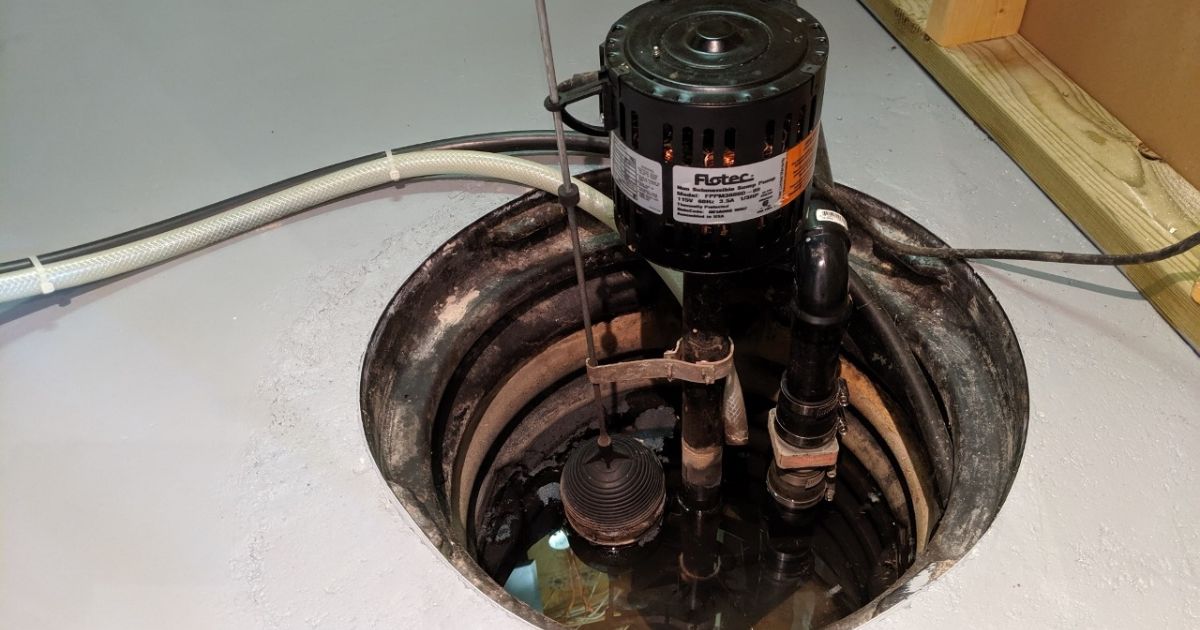
Compliance with the National Electric Code ensures the safe and reliable operation of sump pumps by addressing their current requirements. Sump pump current refers to the amount of electrical current that the pump draws from the power source. Understanding the current requirements of a sump pump is essential for proper installation and operation. Here are some key points about sump pump current:
- Sump pumps are typically designed to operate on a specific voltage, such as 120 volts or 240 volts.
- The current draw of a sump pump is measured in amps (amperes).
- Smaller sump pumps may draw around 3-5 amps of current.
- Larger sump pumps with higher horsepower may draw 10 amps or more.
- It is important to match the electrical circuit and wiring to the current requirements of the sump pump to prevent overloading and potential safety hazards.
- Consult the manufacturer’s specifications or a qualified electrician to determine the correct circuit size and wiring for your sump pump installation.
How Much Power Does A Sump Pump Draw
What is the power consumption of a sump pump? Understanding the power requirements of a sump pump is crucial for homeowners looking to ensure their basements remain dry and protected. The power consumption of a sump pump is typically measured in watts, which is a unit of electrical power.
The exact power draw can vary depending on the specific model and the size of the pump. However, on average, most sump pumps have a power consumption ranging from 300 to 1,500 watts. It’s important to note that the power consumption of a sump pump is directly related to its performance and efficiency. When choosing a sump pump, it’s advisable to consider the power consumption along with other factors such as flow rate and head height to ensure optimal performance and energy efficiency.
Typical Electric Backup Sump Pump

The electrical specification for a typical electric backup sump pump is an important consideration for homeowners. When choosing a backup sump pump, it is crucial to understand its power requirements. Here are some key points to note about the electrical specification of a typical electric backup sump pump:
- Power Consumption:
- Electric backup sump pumps generally require a standard 120-volt power supply.
- The power consumption of these pumps can vary depending on the model and manufacturer.
- Amperage:
- The amperage draw of a typical electric backup sump pump can range from 4 to 15 amps.
- It is important to ensure that the electrical circuit can handle the amperage requirements of the pump to prevent any electrical issues.
Understanding the electrical specification of a typical electric backup sump pump is crucial in ensuring its proper functioning and compatibility with your home’s electrical system. Now, let’s move on to the next important aspect of selecting a backup sump pump: battery selection.
Battery Selection
To ensure the proper functioning of a typical electric backup sump pump, careful battery selection is essential. When choosing a battery for your backup sump pump system, it’s important to consider factors such as capacity, voltage, and maintenance requirements.
The battery capacity, measured in ampere-hours (Ah), determines how long the sump pump can operate during a power outage. It is recommended to select a battery with a capacity that meets your specific needs, considering factors such as the frequency and duration of power outages in your area. Additionally, the battery voltage should match the voltage requirements of the sump pump system.
Some batteries require regular maintenance, such as adding water or performing periodic checks, while others are maintenance-free. Understanding these considerations will help you select the right battery for your backup sump pump system, ensuring reliable and effective operation when it is needed most.
Battery Performance
Battery performance is a critical factor to consider when evaluating the effectiveness of a sump pump system. The performance of the battery directly impacts the reliability and efficiency of the sump pump during power outages or emergencies. When assessing battery performance, there are two key aspects to consider:
- Capacity: The capacity of the battery refers to the amount of energy it can store. A higher capacity battery will provide a longer runtime for the sump pump, allowing it to operate for an extended period during power outages.
- Lithium-ion batteries typically offer higher capacities compared to traditional lead-acid batteries.
- Deep-cycle batteries are specifically designed for sump pump applications and provide better capacity and longer life.
- Recharge Time: The recharge time of the battery is another important factor. A shorter recharge time ensures that the battery is ready for the next power outage quickly.
- Some batteries come with advanced charging technology, allowing for faster recharging.
- It is crucial to choose a battery that can recharge to its full capacity within a reasonable time frame.
Considering these factors, selecting a sump pump system with a battery that offers sufficient capacity and quick recharge time is essential for reliable performance during emergencies.
Frequently Asked Questions
What Are the Most Common Causes of Sump Pump Failure?
The most common causes of sump pump failure include power outages, float switch malfunctions, clogged or frozen discharge lines, pump motor issues, and improper installation or maintenance. Regular inspections and maintenance can help prevent these failures.
Can a Sump Pump Be Installed Without a Battery Backup System?
A sump pump can be installed without a battery backup system, but it is not recommended. Without a backup system, the pump will not function during power outages, leaving the basement vulnerable to flooding.
How Often Should a Sump Pump Be Inspected and Maintained?
A sump pump should be inspected and maintained on an annual basis to ensure optimal performance. Regular inspections can help identify any potential issues and allow for timely repairs, reducing the risk of water damage in the event of a malfunction.
Are There Any Safety Precautions That Need to Be Taken When Installing a Sump Pump?
When installing a sump pump, it is essential to follow safety precautions to ensure proper functioning and prevent accidents. This includes proper electrical wiring, grounding, and adherence to local building codes.
Can a Sump Pump Be Used in Any Type of Basement or Does It Require Specific Conditions?
A sump pump can be used in various types of basements, as long as certain conditions are met. These conditions include having a sump pit or basin, a reliable power source, and proper drainage system.
Conclusion
In conclusion, determining the amperage of a sump pump is crucial for ensuring its proper functioning and selecting the appropriate electrical and battery systems. The National Electric Code provides guidelines for sump pump installation and the required electrical circuit capacity. Understanding the motor startup current, full load current, and power consumption of a sump pump is essential for maintaining an effective and reliable drainage system. Like a well-oiled machine, a sump pump operates efficiently when equipped with the right electrical components. Learn more “How to clean a sump pump pit?“
